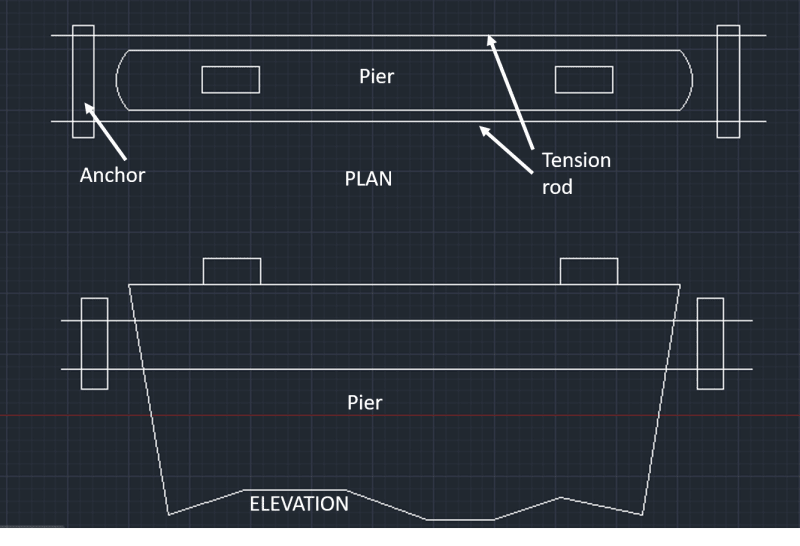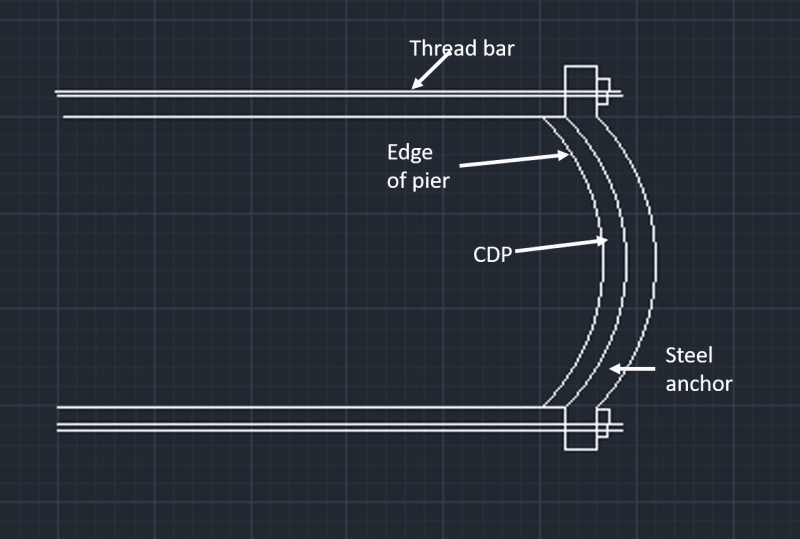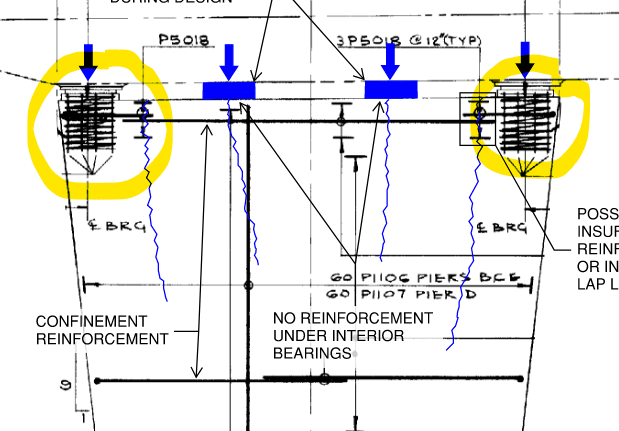tmalik3156
Structural
- Jun 21, 2021
- 104
Good day all.
A bridge pier is showing some vertical cracks near the top. The client wants to restrain the cracks from further widening by applying lateral compressive forces using anchors. Below is the schematics of the idea. The tension rods will be stressed and attached to the anchors at both ends.
But the pier ends are curved (in plan) and sloping (in elevation). So designing the shape of the anchor is a challenge. A custom made anchor with a curved inside will be expensive. So we are thinking of a straight anchor made of steel section (channels or W shapes), with some type of timber shim between the curve of the pier and the straight face of the anchor. The whole system will get embedded in a concrete cap, once the stressing is done. Each of the four tension rods (DYWIDAG thread bar) will be subjected to a tension of about 450 kN.
Do you think this will work? Any other clever idea on how to design the system?

A bridge pier is showing some vertical cracks near the top. The client wants to restrain the cracks from further widening by applying lateral compressive forces using anchors. Below is the schematics of the idea. The tension rods will be stressed and attached to the anchors at both ends.
But the pier ends are curved (in plan) and sloping (in elevation). So designing the shape of the anchor is a challenge. A custom made anchor with a curved inside will be expensive. So we are thinking of a straight anchor made of steel section (channels or W shapes), with some type of timber shim between the curve of the pier and the straight face of the anchor. The whole system will get embedded in a concrete cap, once the stressing is done. Each of the four tension rods (DYWIDAG thread bar) will be subjected to a tension of about 450 kN.
Do you think this will work? Any other clever idea on how to design the system?



